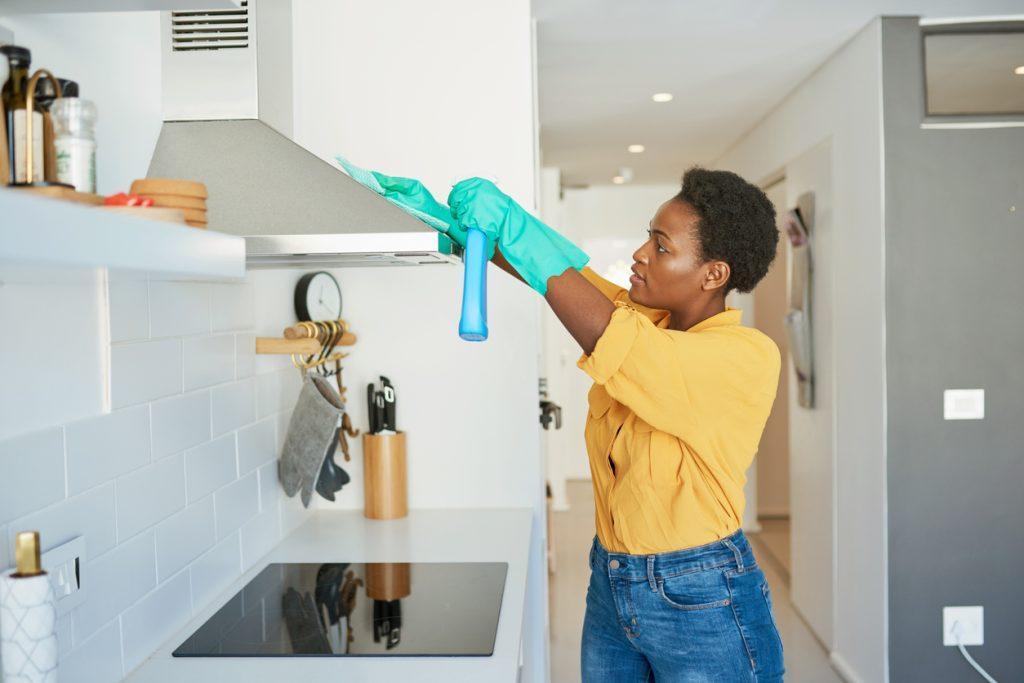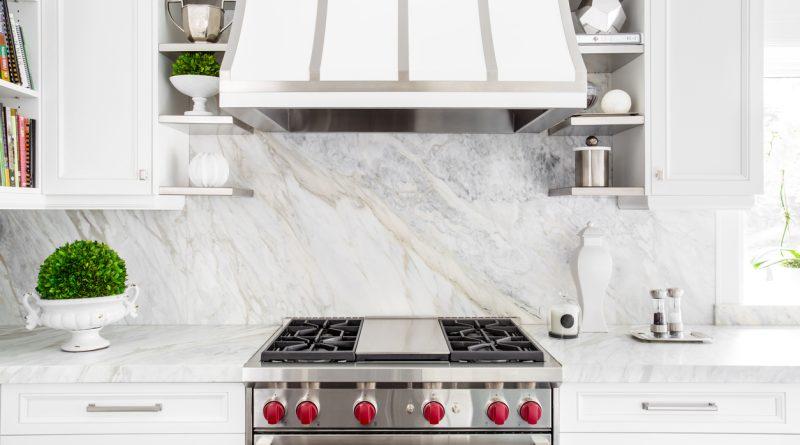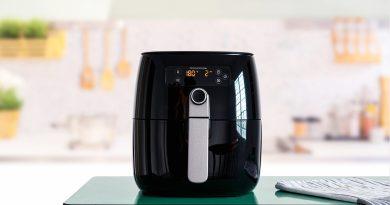How to Clean Your Kitchen Range Hood and Filter
Changes in kitchen designs have increased the importance of the range hood – making them more of a focus point. Several metals create the soaring hood coverings, including steel, copper, and even bronze. Based on the kitchen's style, others are specially designed with Venetian marble, decorated planks, or rustic barn timber.
Functionality is more crucial than aesthetics for kitchen hoods, including fans, filters, and ventilation ducts. You need to utilize and maintain your hood, whether it's an eye-catching cover or a plain metal vent that's fixed beneath a shelf, or a combined vent and oven. This will ensure the optimal functioning of your range hood. In addition, it increases its life span.
The Purpose of Cleaning Range Hood Filters
Keeping your kitchen clean and odor-free is a benefit of using a range hood filter. Once you switch on the fan above your stovetop while frying or sautéing food, the range hood draws the food vapor through its filters. The filter catches numerous grease droplets as the air passes through it.
Most fans have a vent to the outside, so the scents are pushed out of the house. The fan may filter grease out of the air even if it isn't connected to a venting system. As a consequence, your home's air will be cleaner, and you won't have to spend as much time cleaning things like oily kitchen cupboards. Dirty range hood filters don't do an excellent job capturing grease, so you'll need to clean them regularly.
How Often Should You Clean Your Range Hood?
If you cook frequently, you ought to clean your range hood every month. Seasonal cleaning will suffice if you aren't a regular cook. Never skip filter cleaning after festivities or any other big meal. Greases stick to the walls of the ducts when the suction and fans drag the oil and food particles up into it. Cleaning the hood not only improves its appearance and fragrance but also helps avoid a home fire. Cooking is the primary source of injury in home fires and the fourth most significant cause of all residential fires, as per the Federal Emergency Management Agency (FEMA).
For industrial kitchens, the figures are much more alarming. A pot can explode if it is left unattended on a cooktop for an extended period. You should clean your range hood if you see any of the following:
- Even on the maximum setting, the hood somehow doesn't rid the room of smoke. A blocked filter or ducting may be to blame, or the fan's motors may be faulty for this to happen.
- The engine hums or squeaks at all times. The motor is overworked if it makes noises that are out of the ordinary. You may have to clean it or replace it to keep it from rubbing or grooving.
Can You Clean All Filters?
For most range hoods, you'll find one of three types of filters:
- Fabric grease filters
- Grease traps made of metal
- Charcoal filtration
As their name implies, grease filters are designed to remove oil smells and grease from the air. All range hoods have these filters, save for a few versions from the past. Filters made of fabric collect grease and other noxious smells, but they can't be cleaned and must be replaced every few months. Every so often, metallic grease filters need to be cleaned to keep them in good working order. In most cases, they are made of aluminum or alloy steel. At the bottom of your range hood, you'll either see mesh or baffle filters.
Due to its primary function of eliminating smoke and odors, charcoal filters will only be found in ductless versions. If you plan on recirculating the air in your kitchen, this is an essential step. There is absolutely no way to clean these filters. After 3 to 4 months, you should change them based on the frequency and the type of dishes you create.
Tools Required
- Baking soda
- Dishwashing liquid that removes grease
- Water that is boiling
- Scrub brush with no abrasive properties.
- Dishcloths or paper towels
Range Hood Filter Cleaning Guide

A filter attached to the fan of every range hood serves to trap oil and other debris before reaching the ducting. A few are disposable charcoal filters, but the majority are metallic that can be cleaned and utilized over the years. Make sure to check with your manufacturer for any explicit guidelines you may need. Aside from a bit of elbow grease, it's a simple task to clean the filter. Even strong chemicals aren't necessary.
1. Take Out the Filter
Reusable filters can either be slid out or popped out using a latch or latches. It should be simple to remove most filters by sliding or popping them out from the bottom of the hood. Honeycomb filters often contain a metal loop to help you lift and remove the filter. With baffle filters, lift the rear of your filter, push it to the end of the hood, then slide the front part first of the filter out of your hood to remove it.
2. Preparation of Cleaning Agent
Add boiling water to a sink. If you don't have access to a sink, use a big, heatproof saucepan or baking dish instead. The effectiveness increases with increasing the temperature of the water. That may be sufficient, depending on the temperature of the water coming from your faucet. Water should have one to two teaspoons of liquid dishwashing detergent added to it. Dishwashing soap labels should indicate that they include degreasing agents. Swish the water about with a brush after adding 1/2 cup baking soda to make it soapy.
3. Soak the Filter
Allow the filter to soak for a minimum of 15 minutes after submerging it in the solution. Don't leave anything unprotected! Let the cleaners take care of the dirty work for you right now! You should remove it before the water is cold and the grease re-sets on the filter.
4. Rinse and Scrub the Filter
Then, using the scrub brush, eliminate excess oil or food particles from the filter. While scrubbing, replenish your brush with extra dish soap as necessary. Before reinstalling the range hood, make sure to thoroughly wipe it with hot water and a towel or clean cloth.
5. Put Your Range Hood Filters Back in the Range Hood
Immediately after you've finished cleaning, write a note in your diary for yourself to wash your filters in 1 to 3 months. Your vent hood will last for many years with this maintenance.
To Clean the Range Hood's Interior Surfaces
Grease and filth accumulation on the filter's internal surfaces is just as significant as cleaning the filter regularly. Place the hood 24 to 30 inches above the cooktop burners to minimize food spatter. A charred mess here means the hood has not been cleaned in some time.
Tools Required
- A degreaser that may be sprayed over the surface
- Cleaning rags or paper towels
- Brush with soft bristles
1. Apply the Degreaser
Degreaser should be sprayed over the cooktop once the utensils have been removed. Give it a minimum of fifteen minutes to effect. OxiClean is a beautiful solution to start with when dealing with these stains. If it doesn't work, try a dish soap formulated to reduce fat and a pan of hot water with baking soda. As an acid neutralizer, baking soda has long been revered for its ability to destabilize grease molecules.
2. Remove Degreaser Using a Sponge or Cloth
Remove the cleanser and dirt using paper towels. If any residue remains, use nylon-bristled brushes and a little degreaser to clean it away. Wipe away any lingering residue to complete the task.
3. Rinse the Range Hood Thoroughly
If any cleaning remains inside, rinse it off with regular warm water and a dry paper towel or cloth.
How to Clean a Range Hood's Exterior Surfaces
The hood's material has a significant impact on how cleanable it is on the outside. Stainless steel or polished metal are the most common materials for under-cabinet hoods and wall-mounted microwaves with vents. To remove oil, use a clean cloth and a degreasing cleaning agent designed for specific finishes. Use a microfiber cloth dipped in olive oil to polish stainless steel to avoid streaks.
For optimal performance, wipe large ornamental hoods weekly and wash them every month. For specific sorts of finishing, follow the instructions provided by the designer or manufacturer. Polish metal hoods made of copper or brass to a high gloss or left to develop an old patina.
To be safe, try any grease-cutting cleaner or another home chemical, such as acetone, on a tiny patch of your range hood before using it on the whole thing. Make sure that these potent grease breakers are suitable to use before using them on your surfaces!
Clean Your Kitchen Range Hood and Filter
Your Range hood filter can last for multiple years with regular care. When the mesh sags or the seams become weak, it's time to update them. Ensure you contact us today at productiq to learn more on how to maintain your kitchen.




